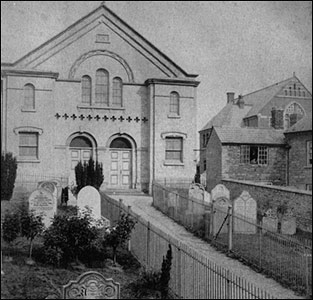|
|
||||||
| Talk presented at Rushden History Society Member’s evening, Paul Roberts 1991 |
||||||
|
Rushden & Higham Ferrers
|
||||||
|
If there is one thing in local history, Mr. Chairman, it is to read that Rushden is a village about two miles south of the ancient borough of Higham Ferrers and that it was in Higham Ferrers that our local boot and shoe industry started.
In this short ten minutes at my disposal I seek to refute that statement and to show that Higham was a rotten, ancient and a pocket borough two miles north of the busy and thriving industrial village of Rushden.
If we examine the list of Fairs of the County we learn that one bought amongst other things cheese at Wellingborough; eggs at Thrapston and cattle at Kettering; indeed the staple produce sold at Wellingborough has left its name in that thoroughfare Cheese lane. Higham Ferrers was reduced to several horse fairs each year. The growing consumer market was developing in other centres in the County. What first started me placing Rushden in its true context was reading the late Victor Hatley's book '1777 Militia List'. Hatley on page xiv lists seventeen places sending more than 100 men to the militia. Raunds, he states, was the largest industrial village in the county; in 13th place, but 14th place is held by Rushden. If we place this list of 17 places in order of the numbers set against their populations; then Raunds and Rushden move up the scale, indicating that by the middle of the 18th century Raunds and Rushden are the places of young people. Higham Ferrers does not enter this list. It is from the 1811 Census return that we can see Rushden as it was. This census lists population and occupations. In the county as a whole 50% are engaged in Agriculture; 40% in Trade, Manufacturing and Handicraft; 10% are engaged in 'other than these'. (The latter is difficult to define). In Chelveston the person in this category is the parson. Raunds has 1101 inhabitants; 36 persons in agriculture; 96 persons in trade, manufacturing and handicraft; 10.5% in other than those. The figures for Rushden, population 858 persons, are 24 agriculture; 101 in trade, manufacturing and handicraft; 47 other than those. These two places are the industrial villages; whilst Higham Ferrers has comparable figures of 823 population; 57 in agriculture, 108 in trades, manufacturing and handicraft with 9 in other than those. Higham Ferrers is the administration of the Harrowden and Higham Estate of the Fitzwilliam estates. It is this Fitzwilliam estate that holds Higham Ferrers in the landed estate system. It is when we turn to the Electoral Roll that we begin to see the emergence of Rushden. In the 1833 Voters list for the Higham Ferrers Hundred there are 368 Electors: 76 electors are at Raunds, 48 at Rushden and 13 at Higham Ferrers. 20.65% of the Hundred's voters are of Raunds, 13.04% at Rushden but only 5.53% at Higham Ferrers. The two industrial villages account for one third of the electors of the Hundred. The electoral percentages for those three same places in 1861 are 453 voters in the Higham Ferrers Hundred – 90 voters at Raunds; 74 voters at Rushden and 16 voters at Higham Ferrers. That is some 36% of the electorate of the Higham Ferrers Hundred live in those two industrial villages. Percentage wise Raunds is 19.68%, Rushden 16.33% and Higham Ferrers only 3.53%. In 1864 we can see that Rushden is 'taking off'. Raunds is slowing down. From that date Rushden develops into the Town that we know; it is developing continuously before 1860. When mechanisation develops in the boot and shoe industry it is Rushden that is ready to take the challenge of industrialisation in the staple industry. Raunds takes and keeps on the hand-sewn army boot road that is really a blind alley of the hand-sewn army boot trade. Rushden develops the light quality shoe and the staple welted boot. The Nichols’ of Raunds that introduced manufacturing of the boot and shoe industry in the 1820s also develop the modern agricultural system following enclosure. John Cave is one introducing manufacturing to Rushden in the early 1870s. And so an agrarian collar is placed around Raunds.
By the 1880s if you wanted to ‘get on’ and give your children a chance in life - a better one than you yourself was born into – you ‘upped sticks’ and went to Rushden, not Raunds or Higham Ferrers. This Rushden had a strong Church, non-conformist and liberal tradition. You could come to Rushden with your beliefs and hopes. It may be old fashioned to talk of the Whig interpretation of our history where the past is seen through rose coloured spectacles; but at Rushden, Mr. Chairman, you could get very near to a life that was onward and upward. There were, of course, dark spots, yet they were tackled by the liberal minds of both the Church and Chapels. Methodists earlier in that C19th would come to Rushden church from Higham Ferrers to be married because of the hostility of the then Earl Fitzwilliam to non-conformists. To sum up, Mr. Chairman, when we think of the name Great Britain and what made Britain great over the years, let us remember that Rushden played its part and is in many ways a microcosm of that which made Britain great. Thank you, Mr. Chairman. |
||||||
|
Paul Roberts |
||||||


